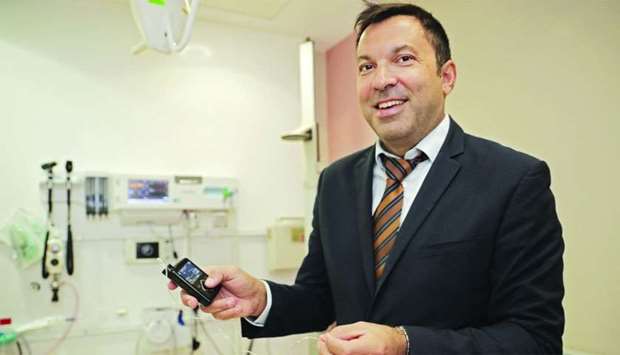Sidra Medicine, a Qatar Foundation (QF) member, has pioneered a new protocol to help children with type 1 diabetes (T1D) in Qatar.
The new protocol developed by Dr Goran Petrovski, an attending physician of paediatric endocrinology/diabetes at Sidra Medicine and an assistant professor of clinical medicine at Weill Cornell Medicine - Qatar and his team, has almost reached the conclusion of a successful trial and offers patients and their caregivers faster and simpler access to the latest diabetes treatment.
“Diabetes centres all over the world follow different protocols in diabetes management technology,” Dr Petrovski, said, adding, “The access to effective T1D treatment and the ease with which patients can use insulin to control the condition depends on that protocol.”
The latest protocol put forward by Dr Petrovski and his team will help Qatar accelerate its diabetes management plan - the country, with around 1,200 T1D patients.
The efforts of diabetologists, endocrinologists, and physicians all over the world have resulted in efficient treatment modes for patients with T1D that combine both glucose monitoring and insulin pumps such as the Hybrid Closed Loop system.
The system, also referred to as an artificial pancreas, uses a sensor and a controller-aided insulin pump both of which are attached to the body of the patient. The sensor reads the glucose levels in the body and sends the information to the controller in the pump; the controller, based on the reading, uses algorithms to calculate the amount of insulin that the patient needs and injects the relevant quantity into the patient.
While there are various models of such sensor-augmented insulin pumps, the most advanced model, the Minimed 670G is offered as a part of the treatment only in the US. Even then, patients often have to face a long wait before gaining access to the device.
“The efficacy of 670G in patients has been proven,” Dr Petrovski said, adding, “But the long waiting period born out of the inability to closely and safely monitor patients and receive accurate feedback, slower administrative processes, delays in educating parents and even complex insurance policies, are a concern.”
“If we had the pumps and a single centralised system to monitor patients in a systematic and accurate manner, why couldn’t patients use the 670G, right from the start, instead of going through various phases where they used other alternatives? And, more importantly, will those patients have the same or better results compared to those switching from another device?” he asks.
In order to test his theory, Dr Petrovski and his team needed access to a reliable hospital system where patients could be provided consistent and continuous information and support, and where his team could closely monitor patients and get accurate feedback – such as Sidra Medicine.
In an ongoing pilot study, 30 patients aged from 7-18, and their parents, were educated in using the Minimed 670G, with the modified protocol by Dr Petrovski and his team. And the results have been positive; the cohort of patients in the study, who were previously on multiple daily injections of insulin, have been able to better control their glucose levels and the quality of life.
According to Dr Petrovski, the results have, so far, proven his hypothesis correct: that as long as young children with T1D and their caregivers are provided with proper education and onboarding, the earlier they start using the Hybrid Closed Loop System, the better.
The team intends to expand the successful study both in Qatar and abroad. Dr Petrovski was recently in Europe to share his findings with experts in countries where the 670G is yet to be introduced, and where the protocol developed in Qatar could potentially give patients a better quality of life.

